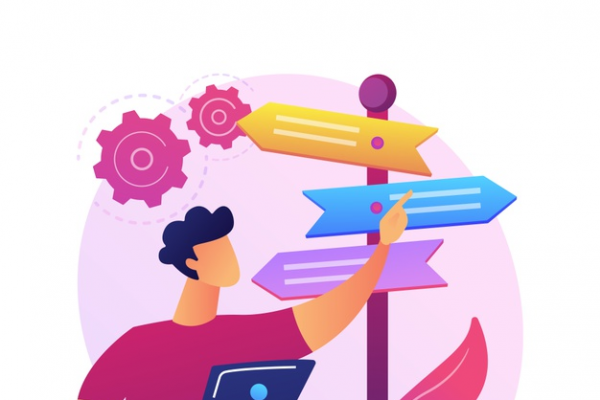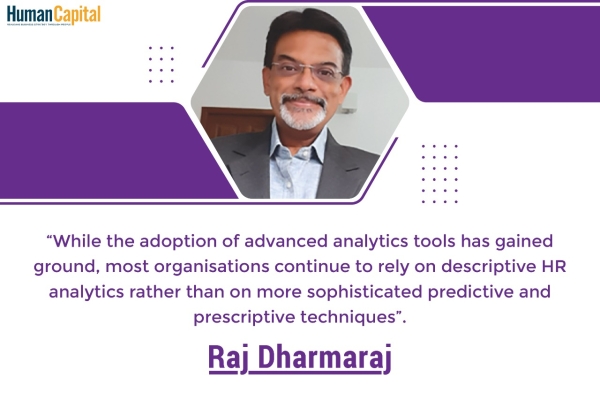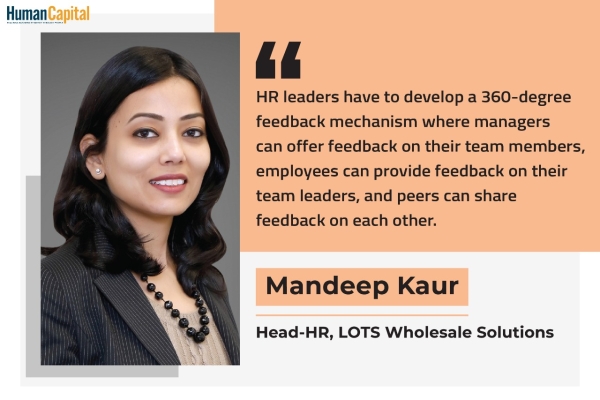Organisations should work towards promoting mindsets, behaviours, processes, and practices that embrace differences and remove barriers.
Today, there is a fair amount of awareness among corporates when it comes to diversity and inclusion (D&I). At least, the C-suite at the enterprise level acknowledges the importance of having either a D&I strategy in place or keenness to kick-off D&I initiatives. Personally, having worked in various roles at the enterprise, global, regional and country levels, my observation is that the MNCs that have been amongst the top 50 D&I organisations for numerous years at the world headquarters level are still lagging in basic D&I practices in their EMEA and Asia Pacific markets. Some of their country leadership teams struggle to understand that diversity and inclusion are two distinct terms.
For them, D&I is equivalent to any gender diversity and unconscious bias awareness program. Also, despite many successful efforts, there is still a lack of minority talent in board rooms and the C-suite.
D&I is a business imperative. Recruitment, unconscious bias awareness, and mentoring programs alone, or merely celebrating Women’s Day/ International Day of PwD/ Pride month won’t move the needle when it comes to having a diverse talent pipeline.
A diverse workforce with highly inclusive culture leads to better decision-making, teamwork, collaboration, innovation, creativity, customer/market perspectives, talent engagement, and financial return. The only way businesses can leverage the power of diversity is through inclusive behaviour and by breaking down the existing silos in organisational structures. So how do you really work towards promoting mindsets, behaviours, processes, and practices that embrace differences and remove barriers? How do you work towards realising the full potential of each individual, team, and the organisation as a whole? Well, we need more commitment, concrete plans, and cultural changes.
Here are a few ways to accelerate your D&I journey:
1. Define diversity and inclusion in a consistent manner and regularly communicate it organisation-wide through various mediums.
2. Focus on data collection and encourage employees to self-identify. This needs a lot of work in terms of employer branding, inclusive practices, role models, advocates, psychological safety, and overall organisational culture.
3. Fix your internal talent development and management practices. There is a lot of bias in talent decision-making processes/ systems; hence, you don’t see diverse talent movement in senior roles or across the board, including cross-functional roles. Think about performance management: How is feedback given to minority talent— constructive or politically correct?
4. Run customised unconscious bias awareness programs to mitigate biases in hiring, promoting, and terminating talent. Incorporate practical nudges in your recruitment, performance management, and succession planning processes.
5. Start a skills initiative to train your minority talent on networking, building relationship capital, enhancing executive presence, etc.
6. Unless leaders are held accountable and compensated for D&I performance, you won’t see progress. Set up D&I targets for both reward and penalty. Design scorecards/metrics and tie them to performance bonuses, rewards and recognition programs.
7. Work on enhancing your employer brand by sharing D&I data/metrics internally and externally. Participate in D&I benchmarking surveys. For example:
◆ Google and Facebook both share their diversity data publicly.
◆ Hindustan Unilever’s MD, Sanjiv Mehta, declared the ambition to achieve full gender parity by 2022.
◆ Goldman Sachs, in January, announced the setting of a new standard to have at least one diverse board member before taking any company public.
◆ Citigroup announced its commitment to close its gender gap.
8. For the business to thrive, you need to connect the dots and bring it all under one umbrella—D&I, CSR, sustainability, and health and wellness initiatives.
9. Leverage your Employee Resource Groups (ERGs) beyond celebrations—for developing leadership, driving a culture of inclusion, acquiring talent, onboarding, engaging and retaining employees, identifying new opportunities, and increasing your market share.
10. Focus and improve your supplier diversity. E.g., partner with women and minority-owned businesses.
For those organisations that have identified the business case for D&I, have secured leadership buyin, and are looking for ideas on what to do next, here are some actions you can take:
1. To begin, assign at least one senior full-time resource for D&I work. Either hire an expert from the market or leverage a consultant to support and enable your team on-site.
2. Identify and make a list of stakeholders to conduct interviews and evaluate your existing practices through a D&I lens. Gather insights on your organisational culture, talent management practices, employee experience, and leadership behaviours to develop the strategic plan that is integrated across the business, HR, and ERGs.
3. Centre your D&I strategy on delivering “must-wins.” Plot a three-year roadmap along with the first-year action plan, including a few quick wins. Examples: Build inclusive leadership competencies; design diverse talent acquisition strategies; embed D&I into business strategies; establish and optimise ERGs; educate, develop and advance diverse talent at all levels; and strengthen governance and accountability.
4. Look at talent acquisition from a D&I lens:
◆ Consider using software such as Textio for gender-neutral language in job descriptions
◆ Partner with vendors catering to minority hiring
◆ Analyse the data to see which sources bring you the most diverse hires. For instance, are you hiring only from Tier 1 colleges?
◆ For senior leadership roles, analyse whether you are considering a diverse slate of candidates who are also being evaluated by a diverse panel.
◆ Run exclusive tailored unconscious bias programs for recruiters and hiring managers
◆ Look for “culture-add” instead of “culture-fit” candidates
5. Build and enhance psychological safety in teams, including virtual teams, so that every voice is heard to promote inclusion and innovation further.
6. Go beyond your traditional leadership development and mentoring programs and launch sponsorship programs for highpotential, high-performing diverse talent.
7. Policymaking:
◆ Keep a D&I checklist ready to ensure that each policy is applicable to every last worker
◆ Communicate the code of zero tolerance for discrimination and harassment
◆ Incorporate flexible work arrangements such as work from home, job-sharing, parttime work, etc.
8. Build an inclusive visual environment via pictures of diverse groups.
9. Sensitise all the employees, including your facilities staff in terms of avoiding sexist comments, how to treat and interact with PwD, the LGBTQ+ community, etc.
10. For accountability and results, measure and share the representation reports. Remember, accountability and execution are key to get anything done!

Is your organisation post-COVID-ready?
Trending
-
SBI General Insurance Launches Digital Health Campaign
-
CredR Rolls Out 'Life Happens' Leave For Its Employees
-
Meesho Announces 30-Week Gender-Neutral Parental Leave Policy
-
Microsoft Unveils Tech Resilience Curriculum To Foster An Inclusive Future
-
60% Indian Professionals Looking For Job Change Due To COVID: Survey
-
SpringPeople And Siemens Collaborate For Digital Transformation Push
-
86% Professionals Believe Hybrid Work Is Essential For Work Life Balance: Report
-
Almost 1 In Every 3 People's Personal Life Affected Due To Work Stress
-
Meesho Rolls Out Reset And Recharge Policy For Employees
-
80% Of Talent Leaders & Academics Say Pandemic Changed Skill Needs For Youth: Report
-
Hero Electric Rolls Out 'Hero Care' Program For Employees
-
Human Capital In Collaboration With ASSOCHAM Hosts Virtual Conference
-
IKEA India, Tata STRIVE Collaborate To Create Employability And Entrepreneurship Opportunities
-
SAP India, Microsoft Launch Tech Skilling Program for Young Women
-
DXC Technology, NASSCOM Collaborate For Employability Skills Program
-
Lenskart To Hire Over 2000 Employees Across India By 2022
-
Mindtree Launches Learn-and-Earn Program
-
Tata AIA Extends 'Raksha Ka Teeka' To Its Employees
-
Swadesh Behera Is The New CPO Of Titan
-
NetConnect Global Plans To Recruit 5000 Tech Professionals In India
-
Hubhopper Plans To Hire 60% Of Indian Podcasters By 2022
-
Corporate India Needs More Women In Leadership Roles: Report
-
Aon to Invest $30 Million and Create 10,000 Apprenticeships by 2030
-
Tech Mahindra Launches ‘Gift a Career’ Initiative for Upskilling of Youth
-
40% Women Prefer Flexible Working Options in Post-COVID World: Survey
-
3 out of 4 companies believe they can effectively hire employees virtually: Report
-
Vodafone , CGI and NASSCOM Foundation launch digital skills platform
-
Odisha: Bank, postal employees to deliver cash for elderly, differently-abled persons
-
Skill India launches AI-based digital platform for "Skilled Workforce"
-
Hiring activity declines 6.73% in first quarter: Survey
-
70% startups impacted by COVID-19 pandemic
-
Bajaj Allianz Life ropes in Santanu Banerjee as CHRO
-
Over 70 Percent MSMEs look at cutting jobs to sustain businesses
-
93 Per Cent employees stressed about returning to office post-lockdown
-
Johnson & Johnson India announces family benefits for same gender partners
-
Indian firms turning friendly towards working mothers
-
Welspun India names Rajendra Mehta as new CHRO
-
Wipro partners with NASSCOM to launch Future Skills platform



Human Capital is niche media organisation for HR and Corporate. Our aim is to create an outstanding user experience for all our clients, readers, employers and employees through inspiring, industry-leading content pieces in the form of case studies, analysis, expert reports, authored articles and blogs. We cover topics such as talent acquisition, learning and development, diversity and inclusion, leadership, compensation, recruitment and many more.
Subscribe Now












































Comment